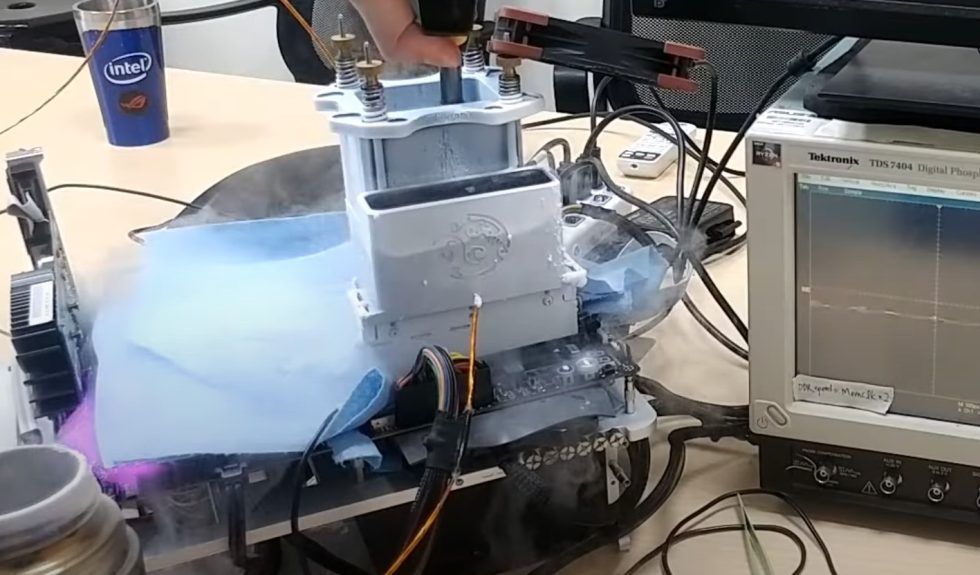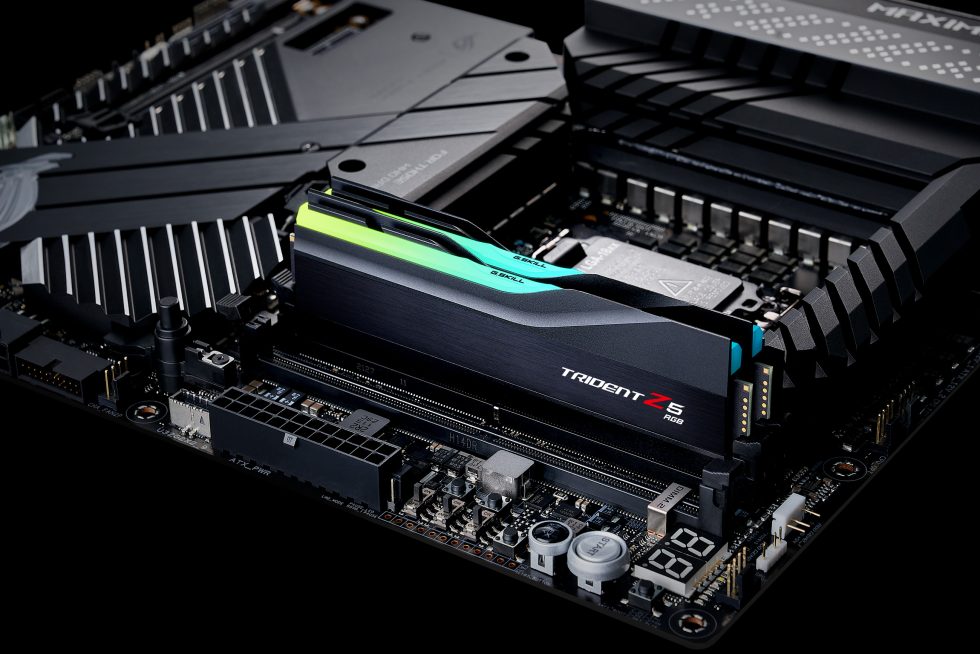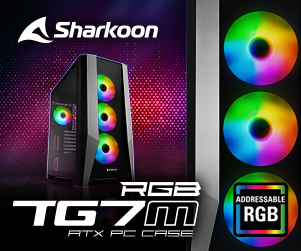G.Skill shows a new DDR5 overclocking world record with 8888 Mbps on Trident Z5 memory. Together with a Maximus Z690 Apex motherboard from Asus and an Intel Core i9-12900K processor, overclocker “lupin_no_musume” has set a new world record for the highest RAM clock. Just as extreme as the frequency is the cooling used for this in the form of liquid nitrogen. As usual for RAM clock records, only a single working memory module is used in the associated single-channel operation to keep the load on the CPU and its IMC (Integrated Memory Controller) as low as possible. After all, such tests are not about performance at all, but merely about the feasibility study of the highest possible frequency.
In the Youtube video from 林大餅Bing, you can catch a glimpse of the system smoking with LN2 and CPU-Z windows for frequency, SPD and motherboard. As usual with such records, the final frequency is set via the BCLK, for whose control the Asus Z690 XOC mainboard of this generation now has dedicated also integrated onboard buttons. Furthermore, it can be seen that the “Gear 4” gearing mode introduced with Alder Lake is used, where the memory controllers are only operated with a quarter of the RAM frequency. This is again an adjustment knob to trim the system to maximum clock rate, at the expense of the performance, which is irrelevant here. For comparison, for daily gaming, currently “Gear 2” in a 1:2 ratio is the now established choice for this generation of Intel CPUs, with a trade-off of latency and frequency and thus bandwidth.
According to the CPU-Z validation link, the RAM module used is the “F5-6000U4040E16G” SKU from G.Skill. But even though this SKU is relatively easy to find on virtual store shelves, it is probably actually a specially selected engineering sample with SK Hynix M-Die memory chips. Unfortunately, the latter are not yet freely available from G.Skill, so the above-mentioned SKUs are currently only equipped with Samsung B-Die memory chips for normal mortals. The CPU is also an engineering sample from Intel, which is probably selected for the most clock-happy memory controller possible. Furthermore, the BIOS version 0042 used, dated to 28.12.2021, can be found in the validation, which indirectly also allows the actual time of the record-breaking to be narrowed down to the last 4 weeks.
Since the number “8” in Chinese culture stands for luck and benevolent fate, the chosen primary timings of the record with 88-88-88-88 are probably no coincidence. Conversely, the actual maximum of the system configuration is probably even a bit higher, but G.Skill likely still keeps this ace up its sleeve to be able to counter any possible record announcements of the competition. We can therefore be curious whether DDR5-9000 has not perhaps already been reached and we are just not allowed to know it yet. And even if one could always question the sense of such a record attempt, it is, as I said, about a feasibility study with the current technology, which is a forerunner for what normal users should expect in future technology generations. And if we’re honest, fun and ambition don’t come short in Extreme Overclocking either, of course.

































Bisher keine Kommentare
Kommentar
Lade neue Kommentare
Artikel-Butler
Alle Kommentare lesen unter igor´sLAB Community →